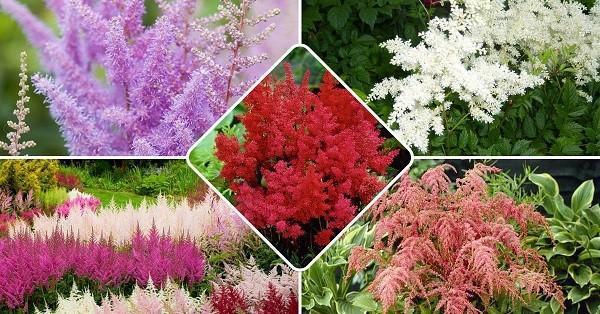One of the most unpretentious perennials for the Astilba garden
 Astilba (photo) - the most desirable plant in the garden, because it feels comfortable in the most unsightly corners of summer cottages, that is, in the shade. Despite poor lighting, this culture not only grows well there, but also blooms amazingly, creating a unique beauty.
Astilba (photo) - the most desirable plant in the garden, because it feels comfortable in the most unsightly corners of summer cottages, that is, in the shade. Despite poor lighting, this culture not only grows well there, but also blooms amazingly, creating a unique beauty.
Plant characteristic
Astilba is a perennial from the Kamnelomkovy family. In the wild, it grows in forests and on the shores of water bodies, where it is humid in summer. This also predetermines the nature of its cultivation at home, making two factors the main requirements, namely the presence of:
- penumbra;
- constant moisture in the soil.
Astilba consists of two parts: the underground rhizome and the aboveground part, which dies off in winter and is reborn annually. The bush has a straight stem, it can be from 8 cm to 2 m high, depending on the type of flower. Serrated leaves are attached to the stem with long petioles, their shape is also determined by the type of astilba and can be:
- simple;
- double-feathery;
- triple-feathery.
The leaf plate and the shoots themselves are colored green, sometimes they have a red tint.
The root itself is woody and can be either dense or loose. Each year, new buds form on the top of it. Thus, astilba recovers on its own.
The annual growth of the bush is up to 5 cm. The bare upper part of the root system with the formed young buds must be additionally covered in autumn, adding soil.
When does astilba bloom?
By the time of the onset of flowering, the shady perennial is divided into three types:
- early flowering varieties (June);
- medium flowering (July);
- late (August).
How does astilba bloom?
Astilba blooms very beautifully, with apical inflorescences stuffed with small openwork flowers. Their color can be very diverse, including both delicate light tones and deep saturated colors.
Inflorescences astilbe can have different shapes:
- pyramidal - on the long main peduncle at right angles to it, lateral peduncles are located, decreasing as they approach the apex;
- paniculate - lateral inflorescences with many of their own additional branches grow at an acute angle;
- drooping - characterized by an arched inflorescence;
- rhombic - the inflorescences grow at an angle of 45 degrees, and the leaves themselves on the shoots are in the form of a diamond.
After the end of flowering, small fruits are tied - boxes.
Classification of types of astilba
In total, there are about 12 plant species, but as a result of the work of breeders, many hybrids have been created on their basis, the number of which reaches two hundred. Some of the most popular hybrid perennial groups are:
- Arends hybrids... They are distinguished by high peduncles and long flowering. The height of the bush reaches 1.5 m, the leaves are dark green, have a dark red border. The inflorescences are either round or cone-shaped.
- Japanese hybrids... Low-growing bushes with a height of 40 to 100 cm, the leaves are lacy, can be both light green and dark red, the inflorescences are lush panicles.
- Chinese hybrids. They grow up to 1.1 m, the shoots of most representatives of the group are brown, and the leaves are pubescent. The varieties of this group are characterized by rapid growth of the root system, as a result of which they displace the plants planted nearby.
- Prostate hybrids. They are distinguished by simple, solid and green leaves. In addition, they have the most lush drooping inflorescences and increased frost resistance.